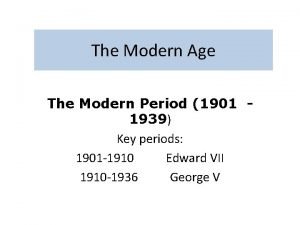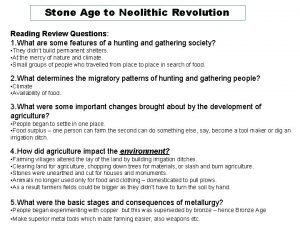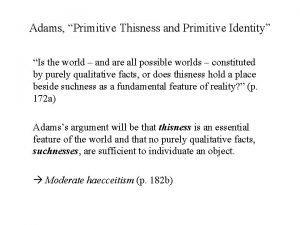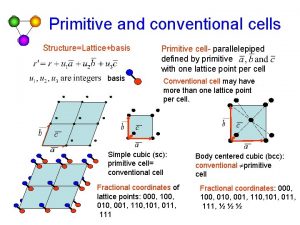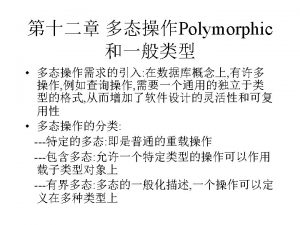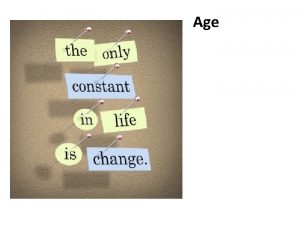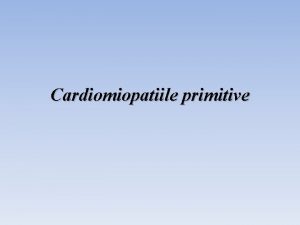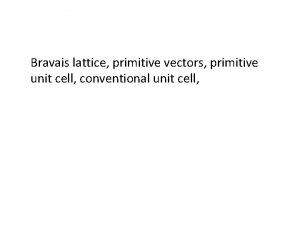EPIDEMIOLOGY MR OGUNDELE PRIMITIVE AND MIDDLE AGE THEORIES





















- Slides: 21

EPIDEMIOLOGY MR OGUNDELE

PRIMITIVE AND MIDDLE AGE THEORIES “Supernatural cause” “Punishment” “Contagion theory” “Miasma” Evil spirits Gods Contact with the sick Bad air/poisonous

Miasma Theory The word "miasma" comes from ancient Greek and means "pollution". Miasma was considered to be a poisonous vapor or mist filled with particles from decomposed matter (miasmata) that caused illnesses.

Miasma Theory (Cont. ) In the 1850 s, miasma was used to explain the spread of cholera in London and in Paris. In China, miasma was thought to be caused by the heat, moisture and the dead air in the Southern Chinese mountains. They thought that insects’ waste polluted the air, water. The miasma theory was consistent with observations that disease was associated with poor sanitation.

GERM THEORY ROBERT KOCH Germ theory: Microbes (germs) were found to be the cause for many known diseases. Pasteur, Henle, Koch were the strong proponents of microbial theory after they discovered the micro-organisms in the patients’ secretions or excretions.

HENLE-KOCH POSTULATES Henle and Koch have postulated that 1. Each disease will be caused by a germ 2. Without that germ that disease will not be caused 3. By introducing that germ , that disease can be caused in animals experimentally, 4. And that germ can again be isolated from that sick animal experimented with.

The result of the Germ Theory: It was believed that each disease has a single and a specific cause (mono-causal approach). Medical practice became devoted to the destruction or eradication of the agent from individuals already affected.


Health Behavior Sex Genetic makeup Immunity Age Noise Bacteria Air Viruses Water Fungi Sanitation

Web of causation According to this concept, disorders are developed through complex interaction of many factors. These factors maybe biophysical, social or psychological and may promote or inhibit the disease at more than one point in the causal process. Ultimately, they determine the level of disease in a community.


As a result of this theory: Based on this theory, it is believed that prevention offers a better prospects for health than cure, since many of these factors can be modified. Since several factors contributes to several diseases, community efforts were shifted to factors modification (prevention) rather than disease treatment.

Theory of general susceptibility This theory is not concerned with identifying single or multiple risk factors associated with specific disorders. It seeks to understand why some social groups seems to be more susceptible to disease and death in general. This reflects an imperfectly understood general susceptibility to health problems.

Examples African American Higher risk group Hypertension Dementia Diabetes (NIDD) Stroke Prostrate cancer

The socio-environmental approach This approach is not so much concerned with the causes of disease, rather it seeks to identify the broad factors that make and keep people healthy. It is concerned with the population rather than individuals.

LEVELS OF PREVENTION Primordial Prevention Primary Prevention Secondary Prevention Tertiary Prevention Primary prevention => pre-event phase Secondary prevention => event phase Tertiary prevention => post-event phase

Primary prevention It aims to prevent disease or injury before it ever occurs. This is done by preventing exposures to hazards that cause disease or injury, altering unhealthy or unsafe behaviours that can lead to disease or injury. Examples Education about healthy and safe habits (e. g. eating well, exercising regularly, not smoking) Immunization against infectious diseases.

Secondary prevention It aims to reduce the impact of a disease or injury that has already occurred. This is done by detecting and treating disease or injury as soon as possible to halt or slow its progress, encouraging personal strategies to prevent reinjury or recurrence, and implementing programs to return people to their original health and function to prevent long-term problems. Example regular exams and screening tests to detect disease in its earliest stages (e. g. mammograms to detect breast cancer)

Tertiary prevention It aims to soften the impact of an ongoing illness or injury that has lasting effects. This is done by helping people manage long-term, often-complex health problems and injuries (e. g. chronic diseases, permanent impairments) in order to improve as much as possible their ability to function, their quality of life and their life expectancy. Examples Cardiac or stroke rehabilitation programs, chronic disease management programs (e. g. for diabetes, arthritis, depression, etc. ) Vocational rehabilitation programs to retrain workers for new jobs when they have recovered as much as possible.

LEVELS OF PREVENTION Stage of Positive Susceptibilit health y Health promotion Specific protection Primary prevention aims at reducing occurrence Stage of Subclinical Disease Stage of Clinical Disease Early Advanced Terminati on Onset of Symptoms Pathologic al Change Early detection and treatment Secondary prevention aims at reducing severity Time of Diagnosis Disability limitation Rehabilitation Tertiary prevention aims Levels of at reducing disability and prevention mortality

LEVELS OF PREVENTION Primordial Prevention Primary Prevention Policies & legislations to address behavior of the population and environment Health promotion & specific protection Secondary Prevention Screening & mass treatment Tertiary Prevention Disability limitation & rehabilitation
 Diff between primitive and nonprimitive
Diff between primitive and nonprimitive Data structures
Data structures Stone age, bronze age iron age timeline
Stone age, bronze age iron age timeline Iron age bronze age stone age timeline
Iron age bronze age stone age timeline Difference between descriptive and analytical epidemiology
Difference between descriptive and analytical epidemiology Nutritional epidemiology definition
Nutritional epidemiology definition Descriptive vs analytical epidemiology
Descriptive vs analytical epidemiology How to calculate incidence rate example
How to calculate incidence rate example Cbic recertification
Cbic recertification Epidemiology person place time
Epidemiology person place time Victorian age and modern age
Victorian age and modern age Difference between stone age and modern age
Difference between stone age and modern age Victorian period in english literature
Victorian period in english literature Perbedaan or dan rr
Perbedaan or dan rr Logistic regression epidemiology
Logistic regression epidemiology How to calculate prevalence
How to calculate prevalence Classification of epidemiological studies
Classification of epidemiological studies Attack rate formula
Attack rate formula Bibliography of epidemiology
Bibliography of epidemiology Association vs causality
Association vs causality Attack rate epidemiology formula
Attack rate epidemiology formula Ramboman analysis
Ramboman analysis










